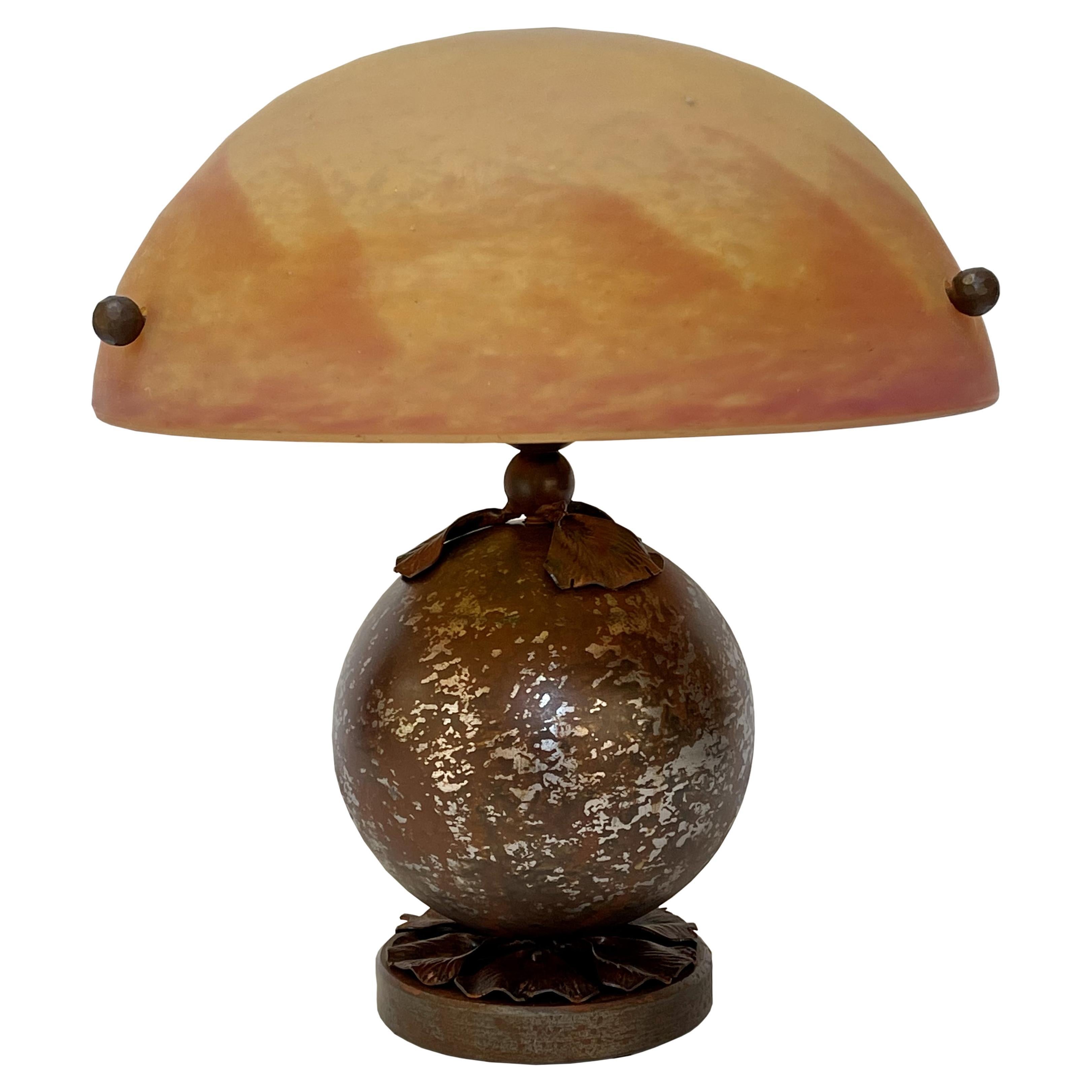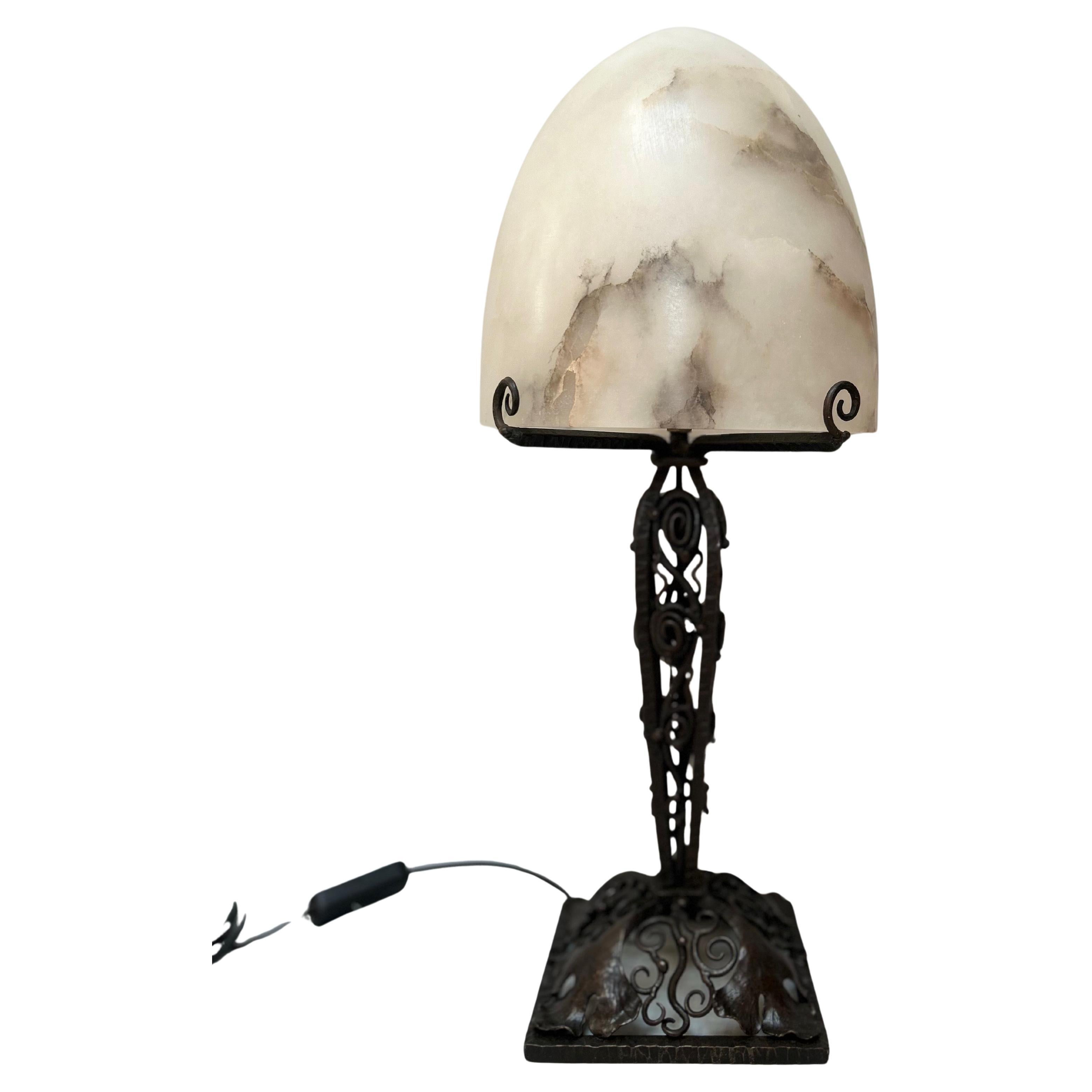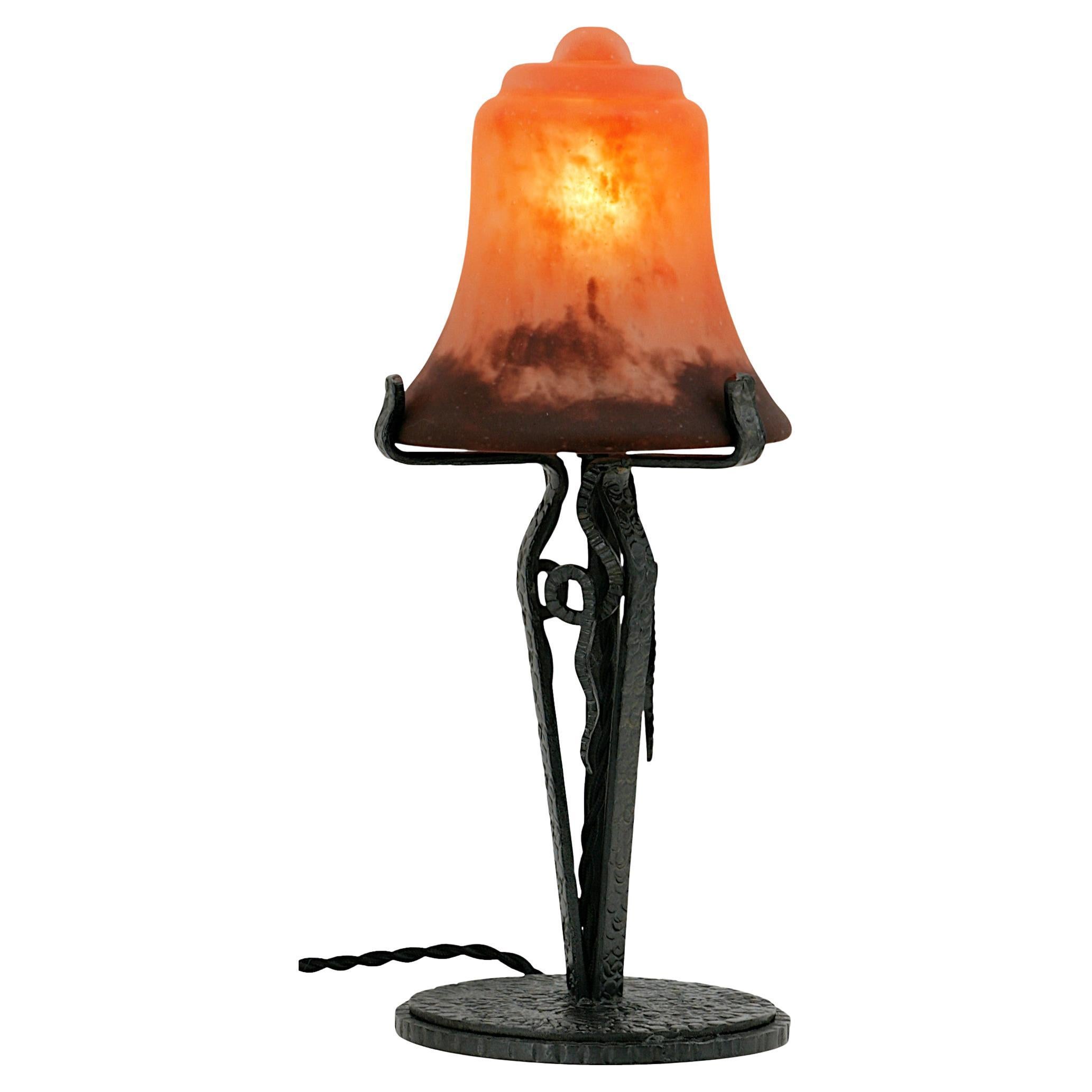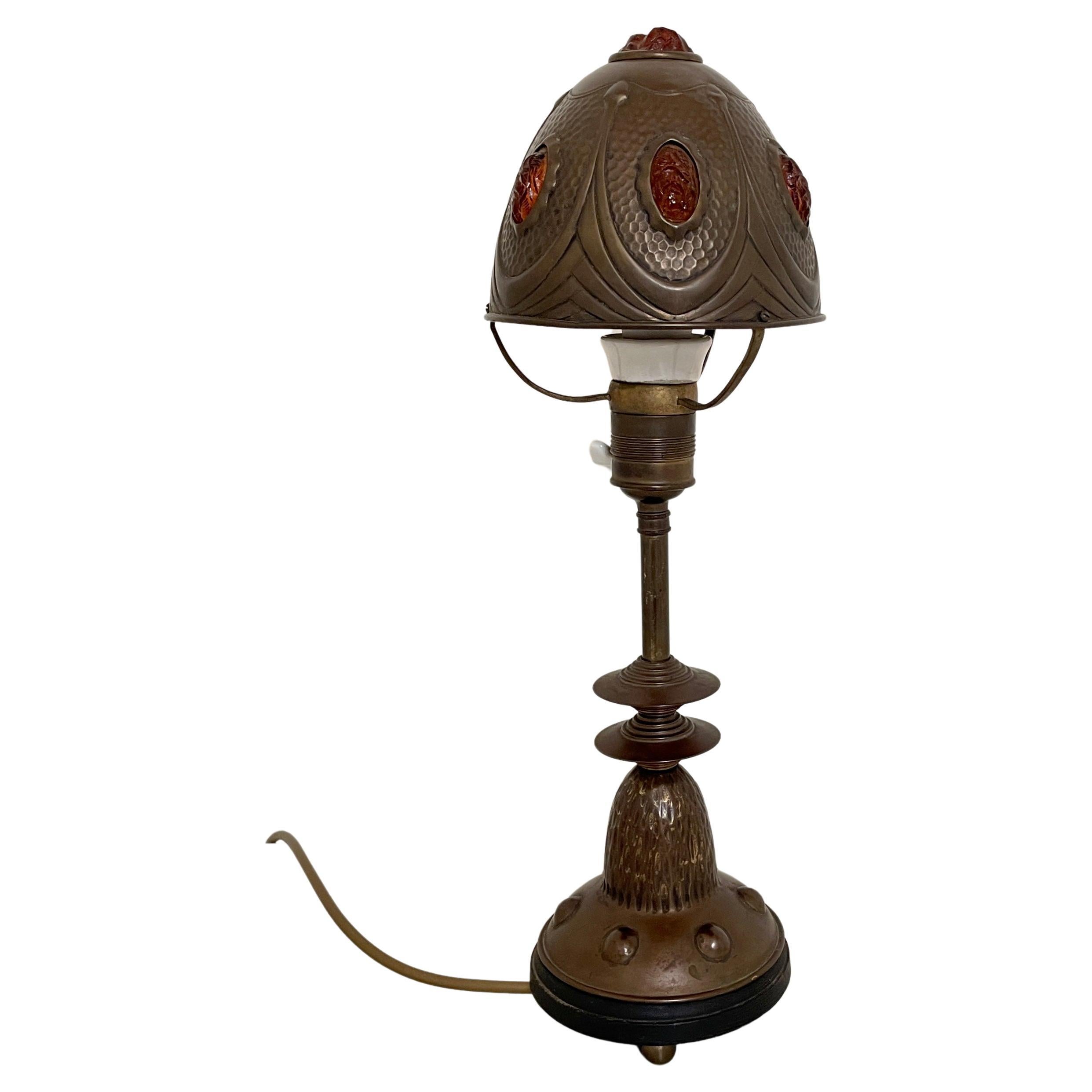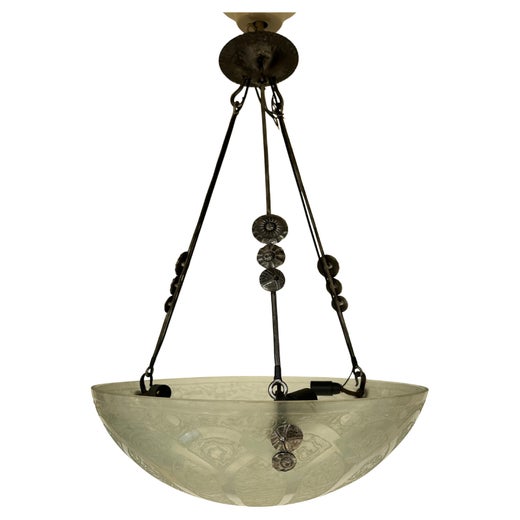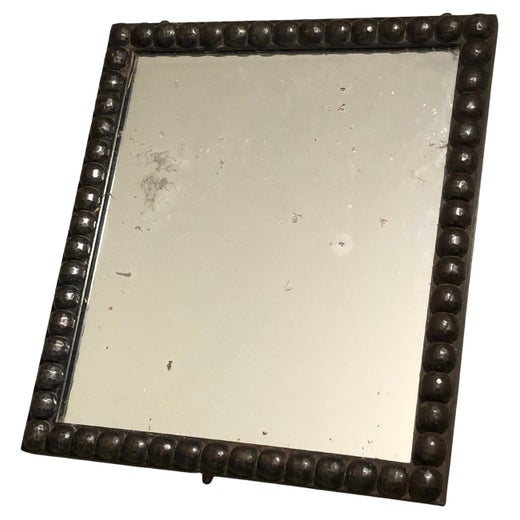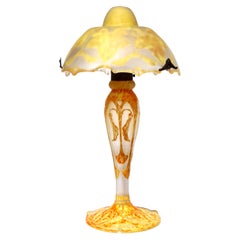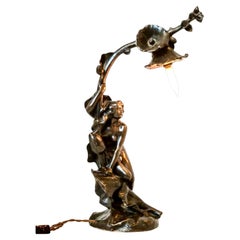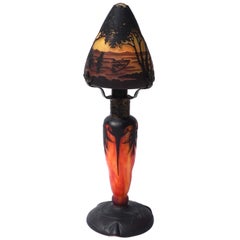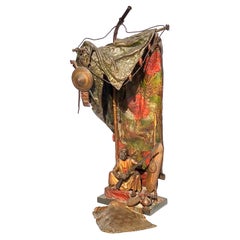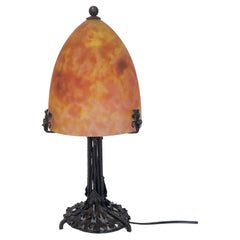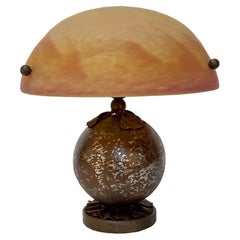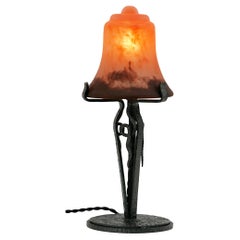Daum Nancy And Edgar Brandt Art Deco Table Lamp
About the Item
- Creator:Edgar Brandt (Metalworker),Daum (Maker)
- Dimensions:Height: 18.25 in (46.36 cm)Width: 8.5 in (21.59 cm)Depth: 6.35 in (16.13 cm)
- Style:Art Deco (Of the Period)
- Materials and Techniques:
- Place of Origin:
- Period:
- Date of Manufacture:1925
- Condition:Wear consistent with age and use.
- Seller Location:Dallas, TX
- Reference Number:1stDibs: LU1774217264111
Daum
For collectors, Daum is a name in the first rank of the French makers of art glass, along with those of Émile Gallé and René Lalique. Led in its early decades by the brothers Auguste (1853–1909) and Antonin Daum (1864–1931), the company, based in the city of Nancy, established its reputation in the Art Nouveau period, and later successfully adopted the Art Deco style.
In 1878, lawyer Jean Daum took over the ownership of a glassworks as payment for a debt and installed his sons as proprietors. Initially, Daum made glass for everyday purposes such as windows, watches and tableware, but the success that Gallé enjoyed at the 1889 Universal Exposition in Paris — the international showcase for which the Eiffel Tower was built — inspired the Daum brothers to begin making art-glass pieces. They produced popular works of cameo glass, a decorative technique in which an outer layer of glass is acid-etched or carved off to reveal the layer below, but Daum became best known for vessels and sculptures in pâte de verre — a painstaking method in which finely ground colored glass is mixed with a binder, placed in a mold and then fired in a kiln.
Though early Daum glass was never signed by individual artists, the firm employed some of the masters of the naturalistic, asymmetrical Art Nouveau style, including Jacques Grüber, Henri Bergé and Amalric Walter (whose first name is frequently misspelled). Daum also collaborated with furniture and metalware designer Louis Majorelle, who created wrought-iron and brass mounts for vases and table lamps. In the 1960s, Daum commissioned fine artists, most notably Salvador Dalí and sculptor César Baldaccini, to design glass pieces. As you see from the works offered on 1stDibs, Daum has been home to an astonishingly rich roster of creative spirits and is today a state-owned enterprise making pâte de verre figurines.
Edgar Brandt
French metalworker Edgar Brandt refused to settle into a single way of doing things and he constantly experimented with different techniques, mediums and styles. From his earliest dive into Art Nouveau to his transition to Art Deco, Brandt brought his craft to bear on pieces ranging from architectural elements, such as doors, to furnishings like console tables and wall sconces — each object rich with thoughtful detail.
When he was 13, Brandt was enrolled by his parents in the prestigious École Nationale Professionnelle de Vierzon boarding and trade school. The school placed him in the ironworking program, where he learned traditional forging methods. He served two years in the military after graduating and subsequently opened a small shop to practice his craft.
In his cozy atelier in Paris, Brandt designed small metal objects like crosses, rings and pendants. He methodically created each piece and slowly worked his way up to larger projects. Inspired by the Art Nouveau furnishings of Louis Majorelle, fashioned from wood and wrought iron, Brandt added furniture design to his skillset.
In 1914, the French military called on Brandt to serve in World War I. During this time, he designed weapons and shell casings that were widely copied and used in both world wars.
After peace temporarily took shape in Europe, Brandt worked tirelessly to design and produce a wide variety of metal pieces. Every year, he showed his work at the Salon d’Automne. In 1919, he expanded his enterprise by building a new workshop, where he employed 100-plus workers. International demand for his work prompted Brandt to expand further and open a factory in the Parisian suburb of Chatillon-sous-Bagneux. There, he had more than 3,000 employees.
In 1936, the French government nationalized his company, and they began to produce armaments under Brandt's name. The onset of World War II led Brandt and his family to flee to Switzerland, where they stayed until the fighting was over. When he finally returned to France, Brandt didn’t reopen his studio. He chose, instead, to work on small-scale projects until his death in 1960.
Brandt received many high-profile commissions and participated in several important collaborations. He co-created some of France's most notable monuments, including the French Tomb of the Unknown Soldier at the Arc de Triomphe — completed in 1921. He received the title Knight of the Legion of Honor and the Medal of Honor for Applied Art from the French Society of Artists.
On 1stDibs, find antique Edgar Brandt lighting, tables and decorative objects.
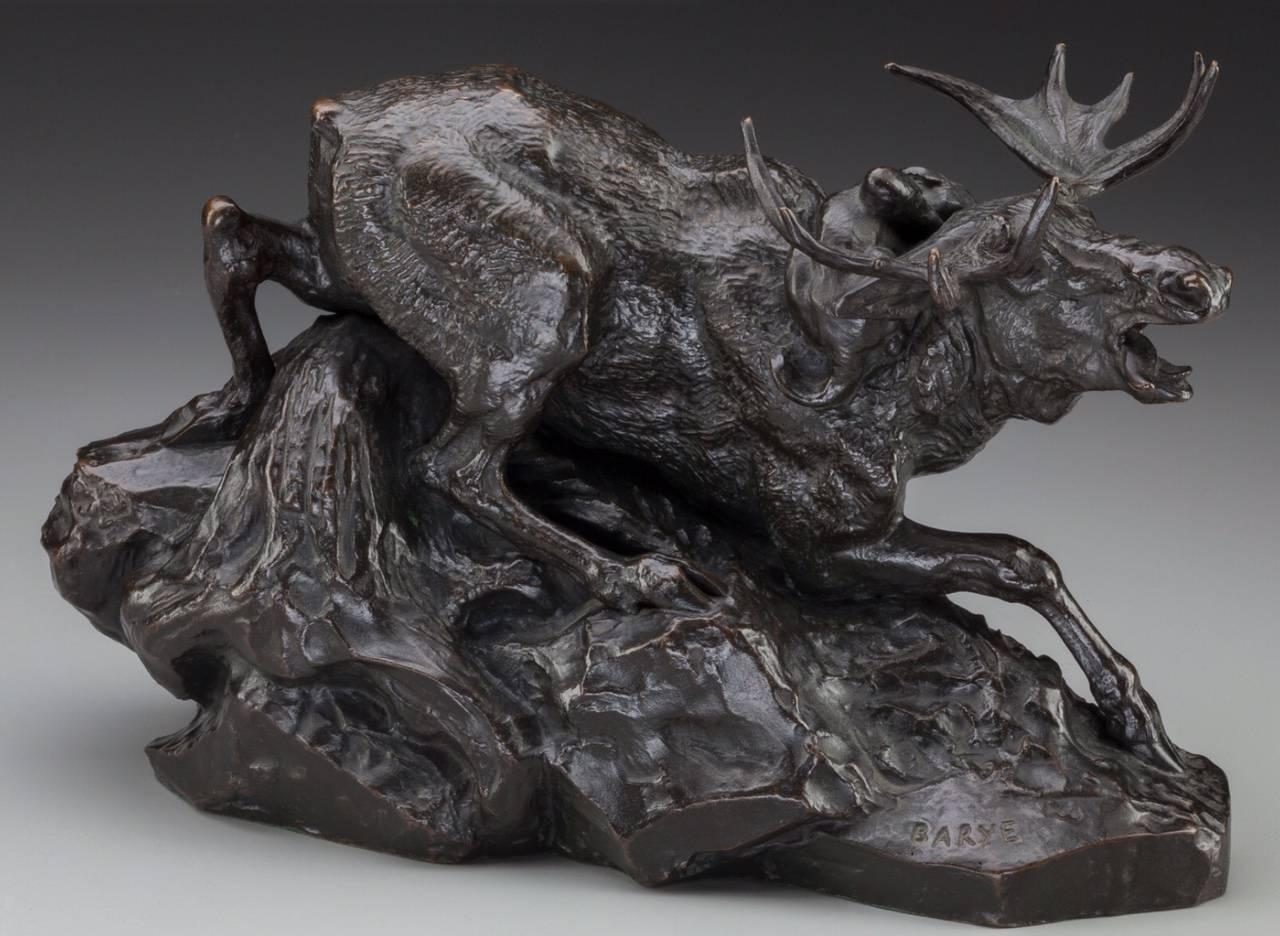
- ShippingRetrieving quote...Shipping from: Dallas , TX
- Return Policy
More From This Seller
View AllVintage 1920s French Art Deco Table Lamps
Art Glass
Antique Early 1900s French Art Nouveau Table Lamps
Bronze
Vintage 1910s French Art Nouveau Table Lamps
Art Glass
Vintage 1910s Austrian Art Nouveau Table Lamps
Bronze
Antique Early 1900s French Art Nouveau Table Lamps
Bronze
Vintage 1910s American Art Nouveau Table Lamps
Bronze
You May Also Like
Early 20th Century French Art Deco Table Lamps
Wrought Iron
Early 20th Century French Art Deco Table Lamps
Wrought Iron
Vintage 1920s French Art Deco Table Lamps
Alabaster, Wrought Iron
Vintage 1920s French Art Deco Table Lamps
Wrought Iron
Vintage 1930s French Table Lamps
Iron
Vintage 1930s German Art Deco Table Lamps
Brass

